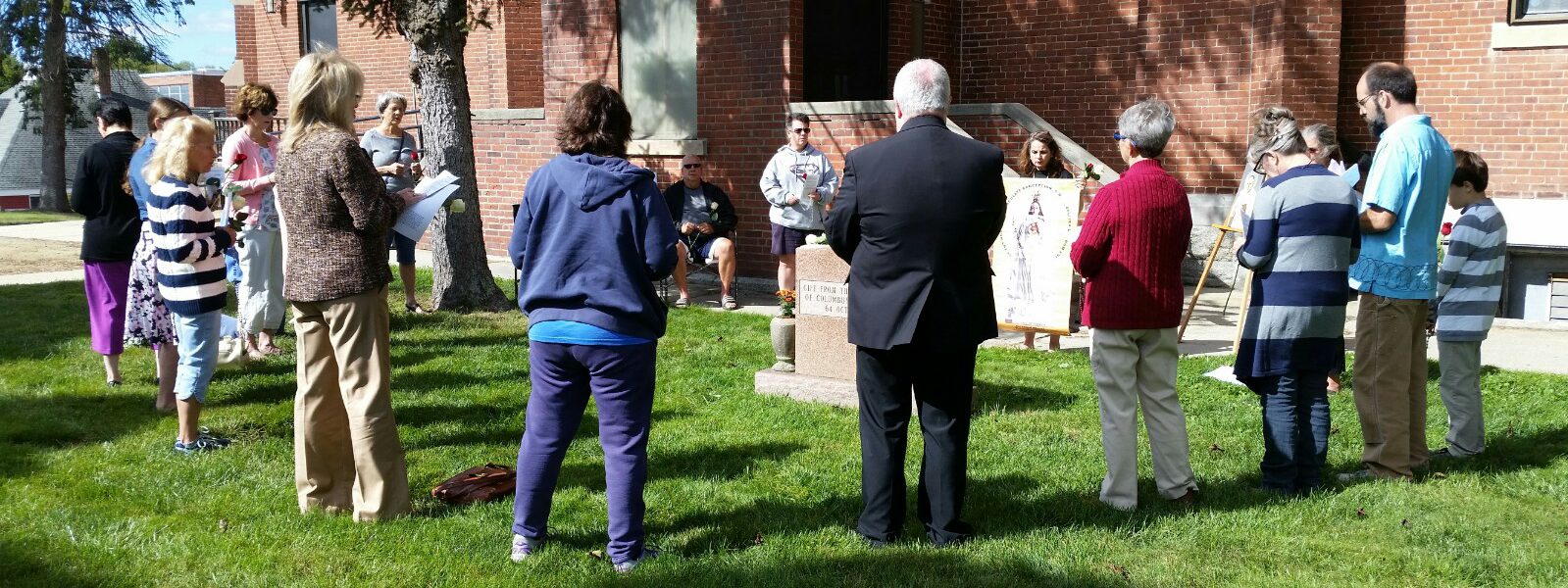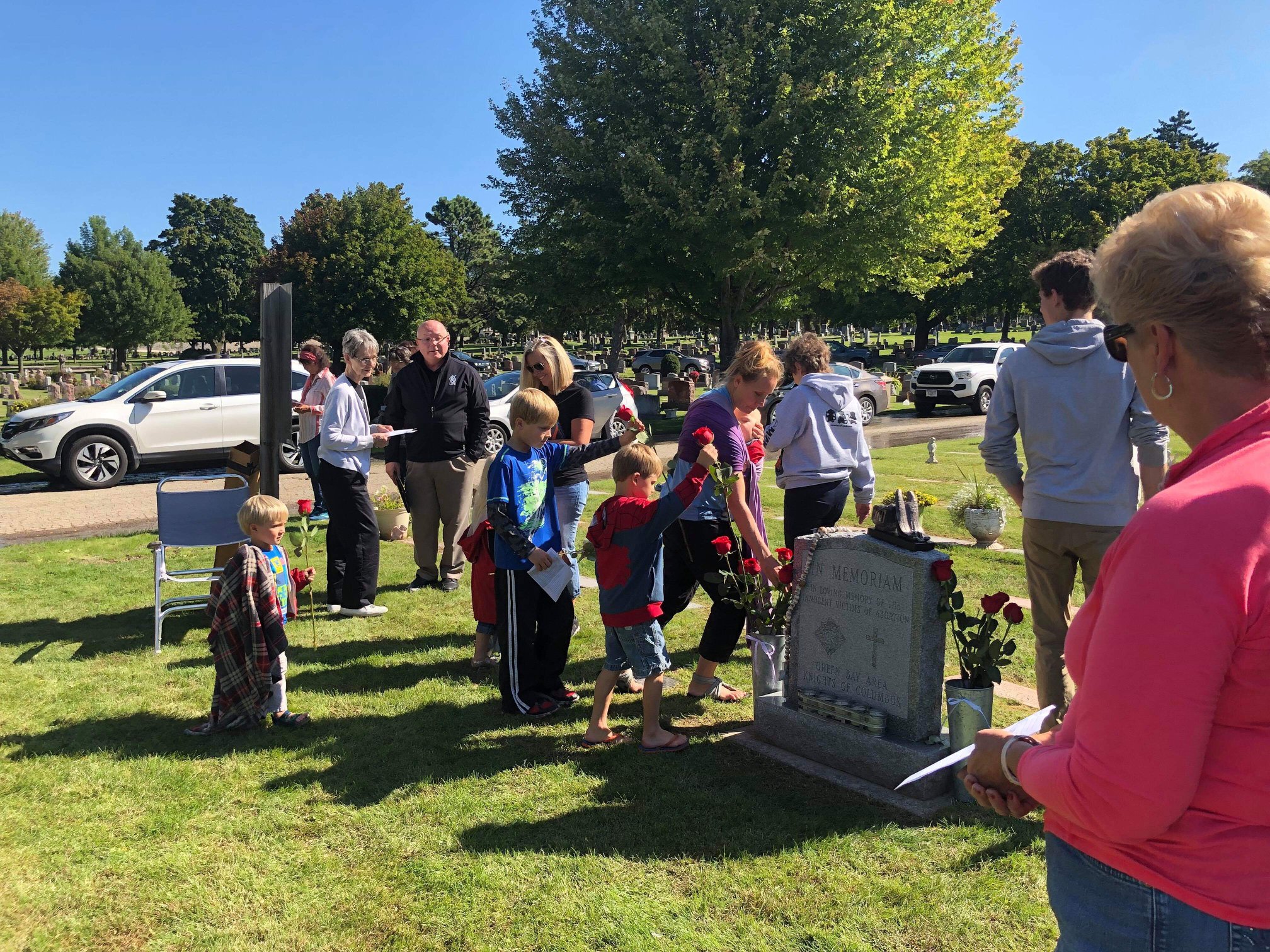One of the goals of the National Day of Remembrance for Aborted Children is to humanize the unborn child in the eyes of our society. An event like this, with people gathering at scores of locations nationwide to honor the gravesites and memorial sites of the victims of abortion, provides a unique opportunity to get our message out to millions of our fellow citizens.
The voices of our aborted brothers and sisters have been silenced, but with due diligence, you can speak for them.
Get to know your local media
Earning media attention for your National Day of Remembrance event starts with understanding how media really works and familiarizing yourself with all the media outlets in your area. Start by reading the 10 Commandments of Media Relations by Tom Ciesielka of TC Public Relations. These rules will help you get the best cooperation from the media you can by understanding what attitudes and actions will help get your story told.
Understanding what good press coverage really means
Good media coverage doesn’t mean having every possible news outlet cover your story exactly the way you want them to. In fact, a byword in the pro-life activist community is that “any publicity is good publicity.”
With good research and a disciplined effort to reach out to the media, you should be able to get good coverage in your community. But even if you don’t, celebrate whatever coverage you do get, and make up for any deficits as best you can with your own coverage of the Nataional Day of Remembrance through all of your networks.
And remember that you’re plugged into a larger nationwide movement. You deserve to be proud of the overall coverage that the event earns across the country.
Researching the media in your area
You can’t expect to get good media coverage if you aren’t really familiar with the media in your community. You probably know the call numbers of some of the local radio and TV stations and the name of the main newspaper, but now it’s time to go deeper and really get to know those media outlets.
To help you make a comprehensive list of the media in your area, check out MondoTimes.com, a directory of local media outlets. Also see if there are local news websites like Patch.com in your area. Write down website, phone numbers, email addresses and fax numbers for all these outlets.
Find out what reporters in your community have already written about abortion, religion or activism on other issues. They will likely be interested in the story the Day of Remembrance is telling, and you should reach out to such reporters directly.
Christian versus secular media: Christian media outlets are far more likely to cover your memorial service than secular media, so take special care to include them in your media list. If there’s a Catholic or Evengelical radio station in your area, include separate entries for both the newsroom and any local programs or talk shows on the station. Include the local Catholic diocesan newspaper, as well as any popular Christian bloggers (many bishops and pastors write blogs, for example). And if time contstaints force you to prioritize your media research, focus on these kinds of friendly media.
Weekday versus weekend media contacts: In compiling your list of media contacts, bear in mind that at many media outlets, different personnel work on weekdays versus weekends. Since the Day of Remembrance is taking place on a Saturday, you’ll want to be sure to find out who is the right person to contact on that day of the week.
Reaching out to the media
It may seem like a daunting task to deal with the media, but the tools, tips and timeline provided below will help guide you through this important aspect of your local observance of the National Day of Remembrance.
Drafting and submitting your press release and media alert
Once you’ve researched the media in your community, you need to reach out to them with a press release to let them know about the upcoming Day of Remembrance, especially “friendly” media like Christian radio and diocesan newspapers.
The national team will prepare a local press release template in two versions as the Day of Remembrance draws nearer, one for services at a Gravesite of aborted children, and another for services at other memorial sites. Those will be available here when they are necessary, and you will be alerted when they are.
Follow the instructions on the templates above carefully.
Download the appropriate press release template and fill in all the specific information for your memorial service, including contact information for the local media spokesperson (either you or someone on your team). You can use the quotes in the press release as-is, or put them in your own words.
Send this release out twice: first on Tuesday, September 5, and then again on Friday, September 8, the day before your memorial service. Send out your press release by email, and if you can, also send it by fax (not all outlets still use the fax). That afternoon or the next morning, follow up by phone to make sure that the release was received, and that the most appropriate reporter has it in hand. Keep in mind that weekday and weekend reporters are often different people (see above)
If you have any questions about using the press release or media alert, contact the national team and we’ll do all we can to help.
Media outreach timeline
Media outreach for the 2023 National Day of Remembrance for Aborted Children will ramp up in the two weeks before the September 9 event. Use the following schedule for contacting and following up with the local media from the weeks before the Day of Remembrance and in the days immediately following.
Thursday, August 3 through Saturday, August 5
- Build media list by outlet name, (generally within 20-50 miles of event). This would include television, radio, newspapers, and internet media, hyperlocal as well as those from the nearest major cities. See the section on Researching the media in your area for tips on how to find your local media.
Monday, August 14 through Friday, August 18
- Check media outlets for specific contacts who have covered pro-life issues, abortion stories, religion, and social issues.
- Confirm assignment desk emails and phone numbers, you may also need to find separate contacts who cover weekend news.
- Consider any final personal invites to local dignitaries in each community to come memorialize victims of abortion in their home community (i.e. local trustees, church leaders, chamber members, etc.)
Saturday, August 19 through Sunday, September 3
- Begin posting online items to community boards.
- Begin posting daily items on Patch.com “boards” (or other hyperlocal online community sites) such as your personal reasons for attending National Day of Remembrance (post a different reason each day).
- Start posting about the Day of Remembrance on social media. Find examples here.
Tuesday, September 5
- Distribute press releases to all your media contacts.
- Make calls to ensure that press release was received, resend if necessary.
Thursday, September 7
- Flood social media with comments and posts that connect the national tragedies of 9/11 and legalized abortion. Find examples here.
Friday, September 8
- Distribute press releases to all your media contacts again.
- Call local news desks to give them “heads up” about Saturday, ask if they received press release or media alert—offer to resend.
- Continue social media outreach (see Thursday, September 8, above).
Saturday, September 9
- Early in the day, at least 3 hours before event start time, call weekend assignment desks/reporters to make sure they are aware of event. Give them basic information, ask if they received press release or media alert, and if needed, offer to resend.
- Encourage onsite participants to engage in news tip reporting and social media posting from site. Reference “Promoting from the Event—The National Day of Remembrance for Aborted Children” and bring copies to distribute at event.
- Take pictures and video.
Saturday, September 9 through Monday, September 11
- Immediately after event begin the “after campaign”, encourage online posting of comments, photos, and video about NDR (including links to AbortionMemorials.com).
- Post video at YouTube, Vimeo, and other vid communities.
- Post photos at Flickr, Shutterfly, and other photo sharing sites.
- Post blogs at Patch.com, other local community sites, other blog sites – add photos, videos, links to stories.
- Post to social media (Facebook, LinkedIn, Twitter, etc.) add photos, videos, links to stories.
- Send follow up coverage to hyperlocal media along with links to photos and videos.
- Send “letters to editors” at hyperlocal publications that reference Day of Remembrance and include resources for abortion education and post-abortion help.
- Distribute press release telling any “stories” from the event to all targeted media, and share with national coordinators.
Tuesday, September 12 and Onward
- “Comment” where possible on both media coverage and social media buzz, continuing to link to NationalDayOfRemembrance.org.
- Post your own stories at the Day of Remembrance Facebook page.
Talking to reporters about the Day of Remembrance
It’s important to understand some key principles of dealing with the media, because if you don’t present them with your story in a way they can receive it, your story won’t get told. So take a few minutes to review the 10 Commandments of Media Relations right before the Day of Remembrance itself.
Assign one member of your team to act as Media Liaison during the Day of Remembrance, someone who is well-spoken and can be counted on to engage with reporters civilly, even if a bias against the Day of Remembrance is observed or suspected. All inquiries from reporters—either on site or over the phone—should be referred to that person.
The media liaison should have copies of your local press release for any reporters who show up. If you weren’t able to issue a local release, a copy of the national press release will suffice.
When talking to reporters, make every effort to stay focused on the central issue of the humanity of the unborn child and the sorrow we feel that so many millions have been aborted. Use reporters’ questions as a platform for returning to this topic. The Day of Remembrance national team will provide talking points to help you present this message to reporters.
Always ask reporters, either before or after an interview, what media outlet they work with and whether they have a card to give you. This will help you find the interview as well as give you a good contact for your next event.
Summary of media resources
All the key media resources linked to above will be listed here when available:

